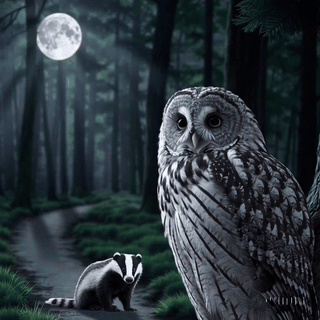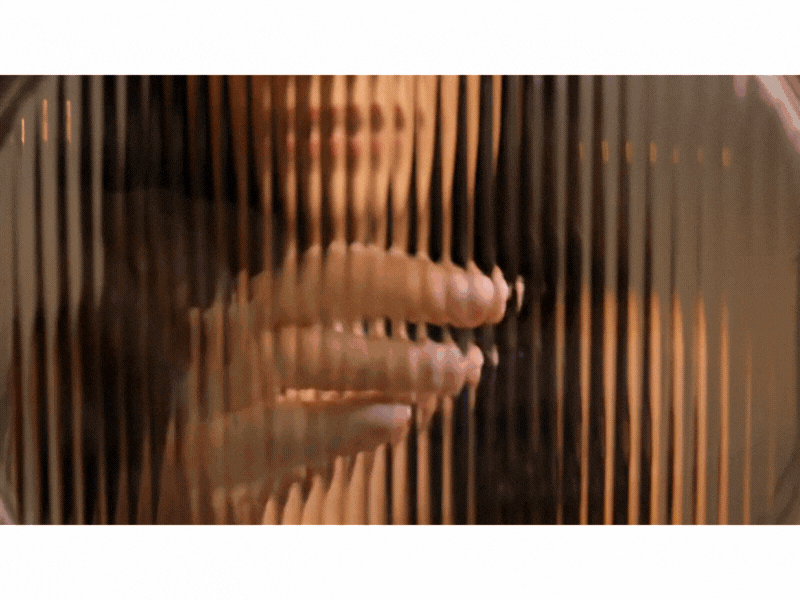
The world of online content is changing fast with a surge of videos created by artificial intelligence. These AI-generated videos are becoming more common on social media, often looking incredibly realistic. This rise of AI video generation is a major topic for anyone who creates or sells videos, including video agencies, making the ability to spot these videos an essential skill.
The rise of AI video generation
Behind every AI video is a system that has been trained with a massive amount of data, including images, videos, and text. The process uses vast amounts of data and electricity, leading to a surge in the rise of microchips, datacentres and power stations. AI tools use this information to create new, original scenes from a simple text prompt. For instance, you could type ‘a wise old owl and a nervous badger sit on a moonlit forest path’ and the AI service, such as ChatGPT, will generate a video of that exact scene.

These programs, such as Google’s Gemini, take the user's input, a description, a still image, or a short video clip, and build the moving scene from scratch. They handle everything from the visuals and character movements to the lighting and audio, making it easier to produce professional-looking content without expensive equipment or a full production crew. The ability of these services is developing at a rapid pace.
How to identify an AI-generated video
While the technology is advanced, AI-generated videos still often contain subtle clues that give them away. Learning to spot these inconsistencies is key to telling a real video from a fake.
1. Look for visual anomalies
AI still struggles with certain complex details. Pay close attention to details that are inconsistent, such as reflections, shadows and movements in the background.
- Backgrounds and objects: Watch for objects that might warp, change shape, or pass through each other. In a real video, this would be physically impossible. The background scenery might also seem static or unnaturally smooth, lacking the small, random details you'd expect to see.
- Hands and fingers: This is one of the most common giveaways. AI can have trouble with the anatomy of hands, leading to fingers that are distorted, have too many digits, or move in an unnatural way.
- Shadows: AI is yet to master shadows and videos with these may be elongated, missing or malformed. They could also be inconsistent with the shape of the object and different to other shadows in the clip.
- Faces and expressions: A human face has countless micro-expressions. AI often struggles to replicate this, resulting in faces that appear too perfect, symmetrical, or have unsettling eye movements. A character might smile with their mouth but have dead or emotionless eyes.
2. Analyse the movements and physics
AI can sometimes miss the mark on how things move in the real world.
- Unnatural actions: Look for movements that don't make sense or are repetitive. A person might perform a strange, robotic action, or an object might not behave as it should under the laws of gravity and momentum.
- Character interaction: See how characters interact with their environment and each other. Do their gestures match what they are saying? Is their reaction to an event human-like or is it emotionless?
3. Listen to the audio
The audio can also offer clues. While AI-generated voices are getting more realistic, they can sometimes lack the natural pauses, breaths, and ambient background noises that are part of real speech.
4. If it seems impossible, it could be AI
The news media is made up of hundreds of stories every day that seem impossible. That’s why they are being featured in the media - they are out-of-the-ordinary. These stories of feats of endurance, life-changing experiences and near-death brushes with disaster are often true. However, there are now many situations portrayed on AI videos that are just impossible, defying the laws of physics and nature. The best way to check these is to view them critically, using common sense, logic and rational thinking to decide if they are likely to be true. A quick Google search can also be used to check if such situations have happened before. Or, as in the case below involving a fairground ride on the side of a hotel in China, whether that had been reported already or if the hotel listing does indeed show a giant mechanical arm on the side of the building.
5. Look for AI labels
Social media sites like YouTube, TikTok, and Meta are taking steps to help audiences identify AI content. These platforms now require users to label AI-generated content, and their systems can automatically apply a 'Made with AI' or similar badge. This makes it easier for viewers to tell what is real and what is not and fortunately, this automated (AI, again) system will continue to improve.
Six examples of AI-generated videos that went viral
While many AI-generated clips are harmless and creative, others have gone viral by tricking people into believing they are real. These videos often serve as a cautionary tale, highlighting for news outlets and the public the dangers of misinformation in a rapidly changing media landscape.
Kangaroo
An AI-generated video of a kangaroo holding a boarding pass while waiting to walk onto a plane was featured on the Daily Mail. The report states clearly that the video was computer-generated. ‘The kangaroo video was actually created by AI - and the internet is panicking in response to finding out that they were successfully tricked,’ they write.

Fake earthquake
The BBC Verify service explained how this video of an earthquake was generated by AI. It was proven to be fake but received millions of views. They claim it was one of several fake AI videos that emerged in the aftermath of the earthquake in Myanmar.

Paramotor
A video of a paramotor flier ascending to unusual heights in China was true - but part of the footage of the incident had been illustrated with AI. This clip had visual inconsistencies with other videos of the incident that were genuine. More can be read about this case here, in a report by Reuters, in which they tell how a review by a digital security firm consulted by Reuters found that ‘some of the footage had been faked’.However, the majority of the video was authentic. This seems to be a case of AI being used to illustrate a news story. The video was then joined with the subject’s seemingly authentic clip.

Gymnast goat
An incredible super goat’ balancing on an overhead powerline, seemed too strange to be true. And it was, not only is such a feat of gymnastics impossible for a goat, no matter how intelligent they may be, there were a number of visual inconsistencies in the video. However, the video was published and syndicated by at least one news agency before being published online.

Cat and owls
This video of a cat curling up in an owl’s nest was distributed by the video licensing agency Newsflare before being flagged as AI-generated. It currently has almost nine million views on Facebook. However, it was later withdrawn from their video licensing platform, as reported by trade publication The Press Gazette.

Hotel ride
This fairground ride whizzing up the side of a Holiday Inn Express hotel might look exhilarating but guests would no doubt be pretty unhappy with it disturbing them throughout the day. Visual inconsistencies in the frames show that the mechanical arm is also floating and the ride is seemingly moving through the concrete and steel of the building.
The incredible ride is not shown on pictures of the hotel listing on booking.com or IHG, which is odd, as the engineers behind such a feat might feel a little underappreciated that their genius is not being promoted.

How AI-generated videos are being used
1. For personal use: This is the simplest category. Individuals use AI video generators for personal projects, social media content, and creative hobbies. There are generally no commercial or legal restrictions in these cases, making it a great way to experiment with the technology.
2. For commercial use: Agencies and creators are leveraging AI to meet business objectives.
- High-volume content: Quickly generating multiple versions of an ad to test which performs best.
- Cost-efficient production: Creating explainer videos or product demos at a fraction of the cost of traditional video production.
- Personalisation: Crafting unique videos for individual customers, such as a marketing email that includes a personalised message from a digital avatar.

3. For news, journalism, explainer and how-to videos: In the newsroom, AI is used with strict transparency. AI videos are never presented as real footage of an event. Instead, they are used for
- Illustrative graphics: Creating animated visuals to explain complex data or a scientific concept.
- Simulations: Generating a simulated visual of a hypothetical scenario, which is always clearly labelled as an AI rendering.
- Online videos: This YouTube video gives historical insights into the Roman Empire user AI-generated visuals, which are useful and add to the viewer's experience.
Can AI-generated videos be sold to video agencies?
This is a vital question for any creator looking to monetise their skills. The answer depends entirely on the type of agency and its purpose.
Certain agencies are not only open to but actively seek AI-generated videos. These are typically digital marketing, content marketing, and performance marketing agencies. They use this technology primarily for efficiency, as it allows them to produce a massive volume of content quickly and affordably. They integrate AI videos into strategic campaigns to test different ad creatives. Additionally, they often use AI to fulfil specialised needs, such as creating videos with AI avatars for corporate training.
Agencies that focus on User-Generated Content (UGC)
This type of agency, like ViralPress, operates on a business model of sourcing and licensing authentic, real-world footage captured by everyday people. Their clients include news outlets, commercial entities like entertainment companies, ad agencies, and social media fan pages that want to use compelling, real footage. These agencies have a clear purpose: to find and verify the authenticity of a video and provide the necessary legal licensing for its use. For this reason, they have a strict policy against accepting AI-generated videos. If you are unsure about a specific agency's policy, it is always best to contact them directly for clarification.
As AI video creation improves, the line between human and AI content will become even more blurred. While this presents excellent opportunities for marketing and advertising agencies, movie producers, animators and even news broadcasters who may use AI features to explain issues, there remains a clear need for authentic User user-generated videos that capture real-life moments.
For everyone, knowing how to spot AI is an important skill. AI is a powerful tool that works with human creators, not against them. The final decision on a video's truth and purpose still comes down to human judgment combined with technical factors.
